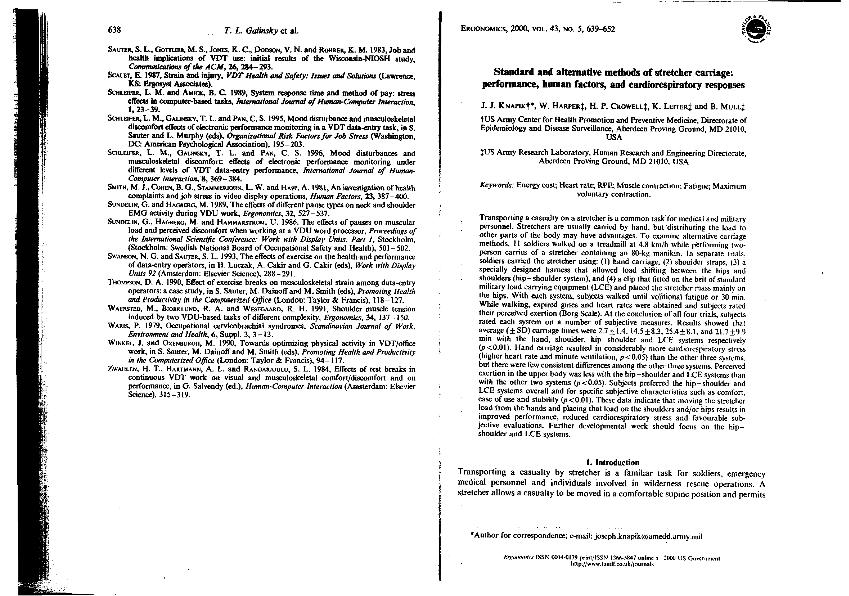Standard and alternative methods of stretcher carriage : performance, human factors, and cardiorespiratory responses

Contenido multimedia no disponible por derechos de autor o por acceso restringido. Contacte con la institución para más información.
| Tag | 1 | 2 | Valor |
|---|---|---|---|
| LDR | 00000nab a2200000 i 4500 | ||
| 001 | MAP20071502903 | ||
| 003 | MAP | ||
| 005 | 20080418123536.0 | ||
| 007 | hzruuu---uuuu | ||
| 008 | 021113e20000501gbr|||| | |00010|eng d | ||
| 040 | $aMAP$bspa | ||
| 084 | $a875 | ||
| 245 | 1 | 0 | $aStandard and alternative methods of stretcher carriage$b: performance, human factors, and cardiorespiratory responses$cJ.J. Knapik |
| 520 | 8 | $aTransporting a casualty on a stretcher is a common task for medical and military personnel. Stretchers are ussually carried by hand, but distributing the load to other parts of the body may have advantage. The aims of this investigation were to examine performance, human factors and cardiorespiratory responses while using four methods of long-term stretcher carriage. Two of these forms of carriage take adventage of the concepts and technologies discussed above | |
| 650 | 1 | 1 | $0MAPA20080586713$aPersonal sanitario |
| 650 | 0 | 1 | $0MAPA20080572303$aFuerzas Armadas |
| 650 | 1 | $0MAPA20080586201$aMaterial sanitario | |
| 650 | 1 | 1 | $0MAPA20080540999$aFatiga |
| 650 | 1 | 1 | $0MAPA20080547936$aLesiones |
| 650 | 0 | 1 | $0MAPA20080603038$aPrevención de riesgos |
| 650 | 1 | 1 | $0MAPA20080550653$aErgonomía |
| 650 | 1 | 1 | $0MAPA20080575731$aEjercicio físico |
| 700 | 1 | $0MAPA20080047863$aKnapik, J.J. | |
| 740 | 0 | $aErgonomics | |
| 773 | 0 | $tErgonomics$dLondon and Washington$gVol. 43, nº 5, May 2000 ; p. 639-652 |

